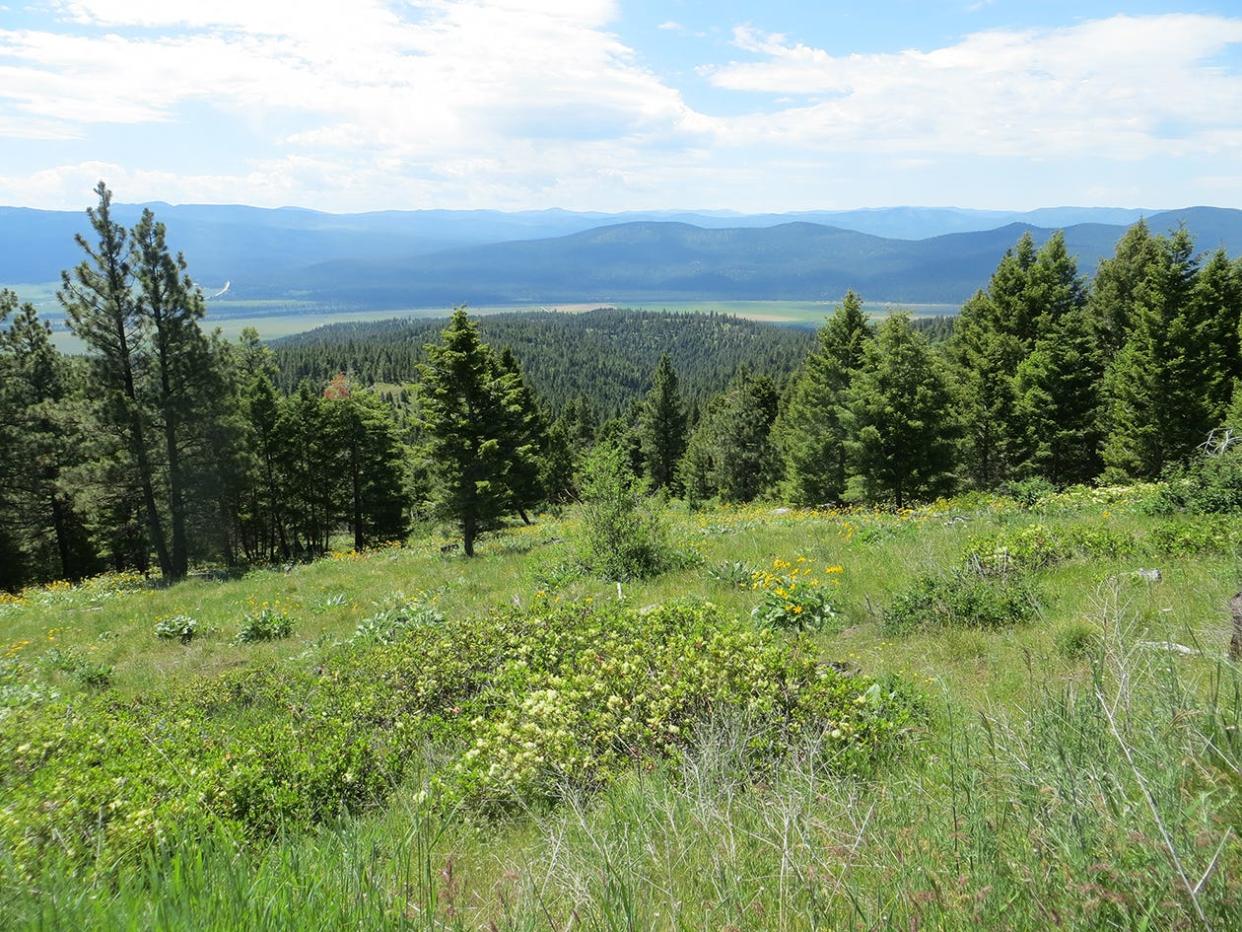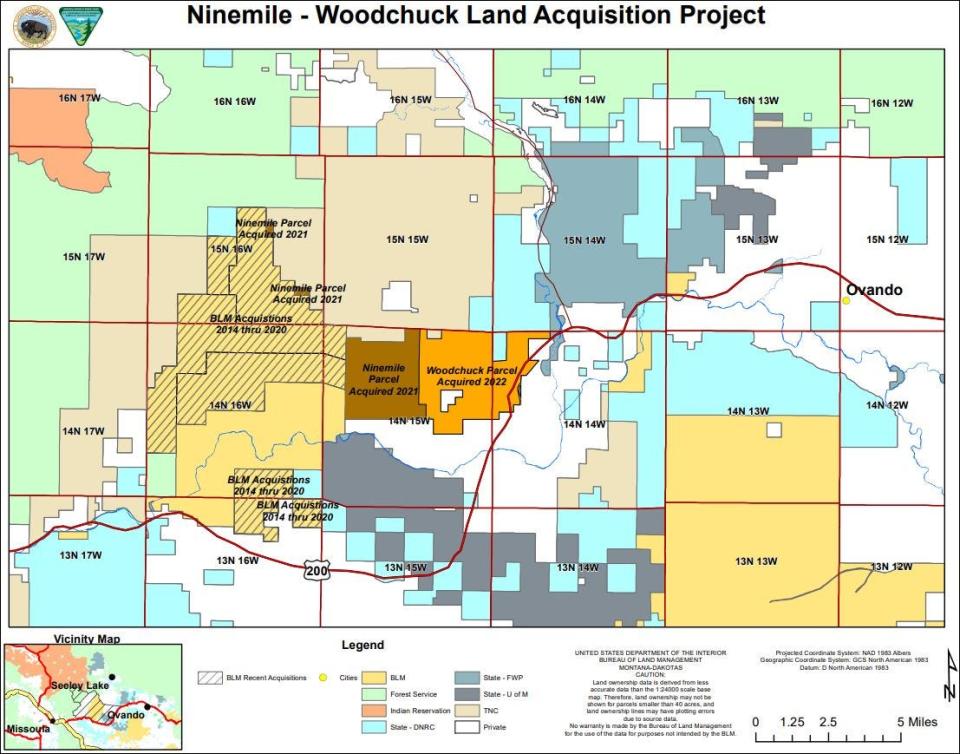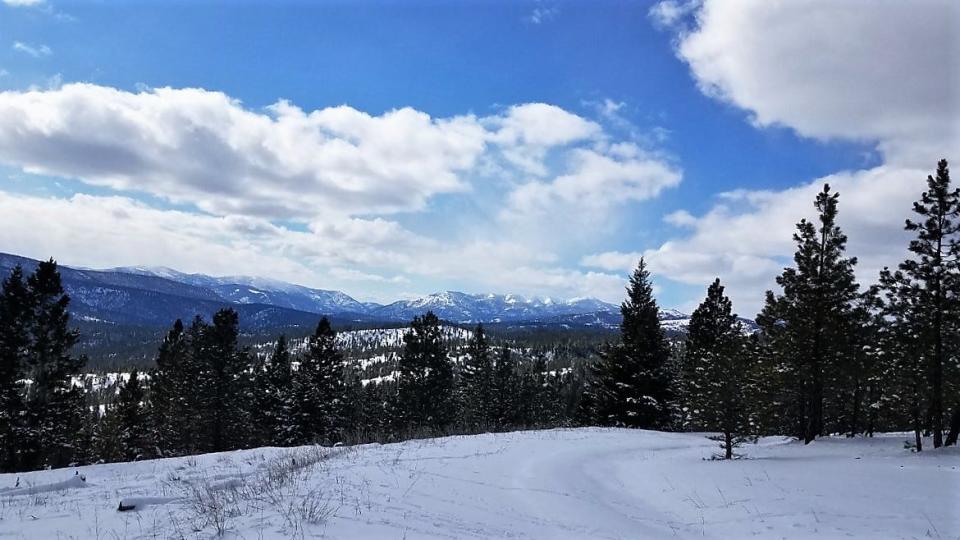Habitat along Blackfoot River purchased for preservation

The American public now owns an additional 10-square miles of high-quality hunting, hiking and premier wildlife habitat lands along western Montana’s iconic Blackfoot River.
On Dec. 20 the Bureau of Land Management (BLM) announced it had completed the purchase of 6,576 acres of mixed evergreen forest lands skirting the southern edge of the Blackfoot River.
“These 6,576 acres mark the second and final phase in the Ninemile-Woodchuck parcel acquisition that began earlier this year,” a BLM news release states. “The BLM’s Missoula Field Office has now added a total of 37,000 acres of former private timber land in the Blackfoot Watershed in a years-long project working with The Nature Conservancy.”
Located roughly 23 miles east of Missoula along the southern edge of the U.S. 200 highway corridor near the small agricultural town of Potomac. The acquisition is comprised of low-lying coniferous timberlands formerly owned and harvested by the Plum Creek Timber Company.
Close to 165,000 acres of Plum Creek’s lands in Montana and Washington State were purchased by the Nature Conservancy in 2014 for $134 million, including lands in the lower Blackfoot Valley near Missoula and lands on both sides of Interstate 90 between Snoqualmie Pass and Ellensburg, Washington.

“The Nature Conservancy purchased the land from Plum Creek to prevent future development, to enhance restoration and protect public access,” a 2021 news release from the international environmental conservation organization states. “As Montana's population has grown, such areas also are prized for their development potential and proximity to the city, leading to concerns over more fragmentation of wildlife habitat.”
In addition to providing public access to a multitude of recreational users in Montana, the acquisition will also preserve critical habitat for threatened and endangered species such as grizzly bears, wolves and Canada lynx. Existing grazing allotments will continue with the transfer to BLM ownership.
BLM Field Manager Erin Carey said the $9.86 million purchase from the Nature Conservancy was made possible by funding from the Land and Water Conservation Fund.
“The property acquisitions were split up into multiple purchases – that’s just kind of how the funding works through the Land and Conservation Fund,” Carey said. “This is not the last, hopefully, of our acquisitions in the Blackfoot. We will be starting up a planning process here that will go out for public comment for another piece of ground in the watershed, which will be the Twin Creek-Gold Creek areas. That will probably be the last of our acquisitions in the Blackfoot Watershed.”
Established by Congress in 1964, the Land and Water Conservation Fund has primarily received money from offshore oil and gas leasing via annual appropriations from Congress. But the bipartisan Great American Outdoors Act, signed into law by President Trump in Aug. 2020, allocated $900 million annually for the fund.
“Providing public access for a multitude of recreational users and applying restoration principles to enhance wildlife habitat is paramount to the BLM’s mission,” said BLM Director and longtime Missoula resident Tracy Stone-Manning. “This acquisition also helps to advance President Biden’s America the Beautiful initiative, which seeks to use partnerships and voluntary actions like this one to conserve, connect, and restore 30 percent of America’s lands and waters by 2030.”

Missoula County and other nonprofits have worked with The Nature Conservancy on past acquisitions and have in the past expressed broad based support to see the Ninemile-Woodchuck deal go through.
“Many of these were Northern Pacific land grant parcels that were provided to the railroad in the 1800s to punch a railroad through here,” Missoula County Commissioner Dave Strohmaier told the Missoula Current newspaper in June 2021. “They've changed hands a few times. It's only fitting they be added back to the public estate for public access.”
The Woodchuck acquisition offers hunting and hiking opportunities, as well as limited summer and winter motorized use, and will be managed similarly to other BLM lands in the Blackfoot Special Recreation Management Area,” the BLM news release states. “In addition to public access for recreation, the goal of the acquisition is to maintain working lands, including active forest restoration and fuels projects that would improve forest health and watershed function.”
The public can access the area via Johnsrud Road on the Lower Blackfoot Corridor and the Ninemile Prairie Road east of Potomac.
For more information, contact Carey at the BLM Missoula Field Office at (406) 329-3914, ecarey@blm.gov; or, Bebe Crouse at The Nature Conservancy at (406) 579-8559, bcrouse@tnc.org
This article originally appeared on Great Falls Tribune: Blackfeet River forest parcel bought by BLM for $9.9 million

